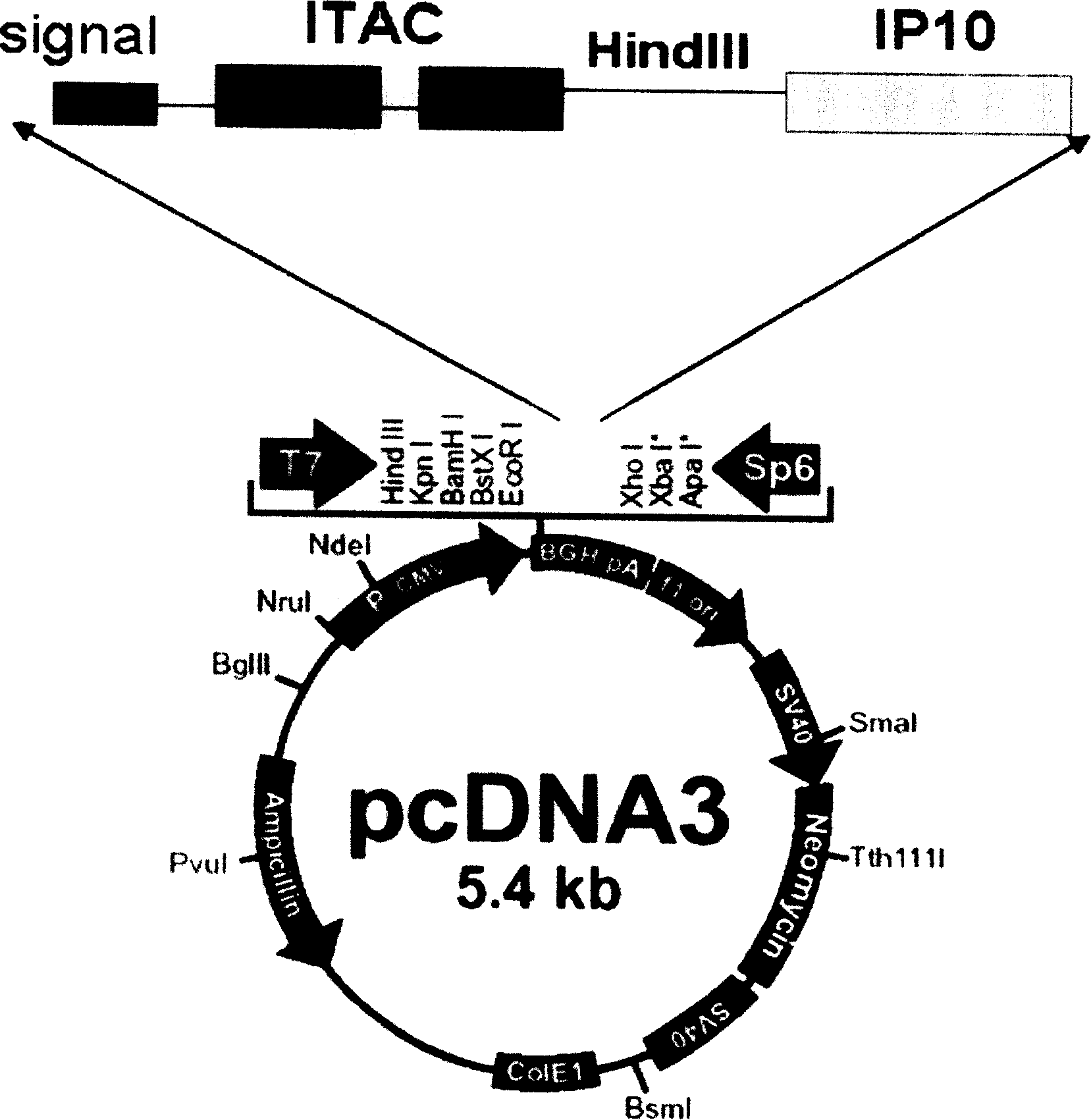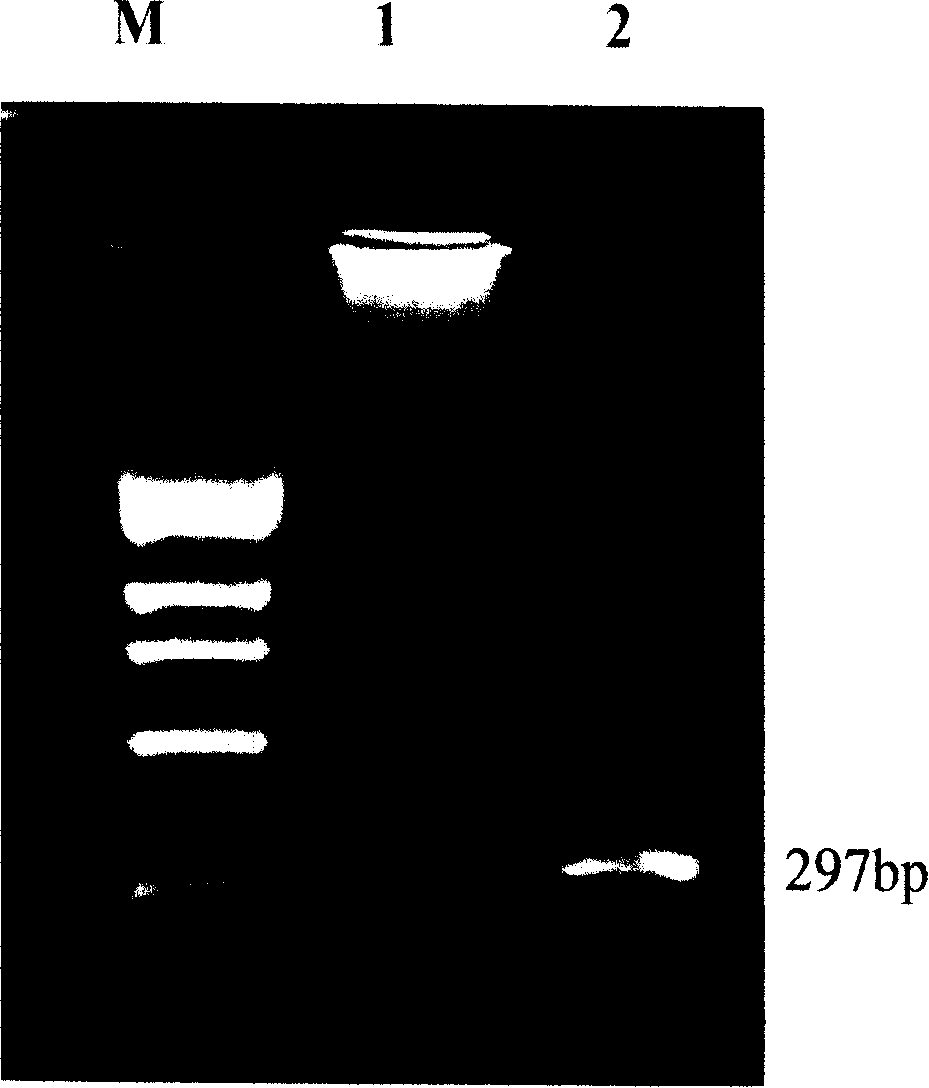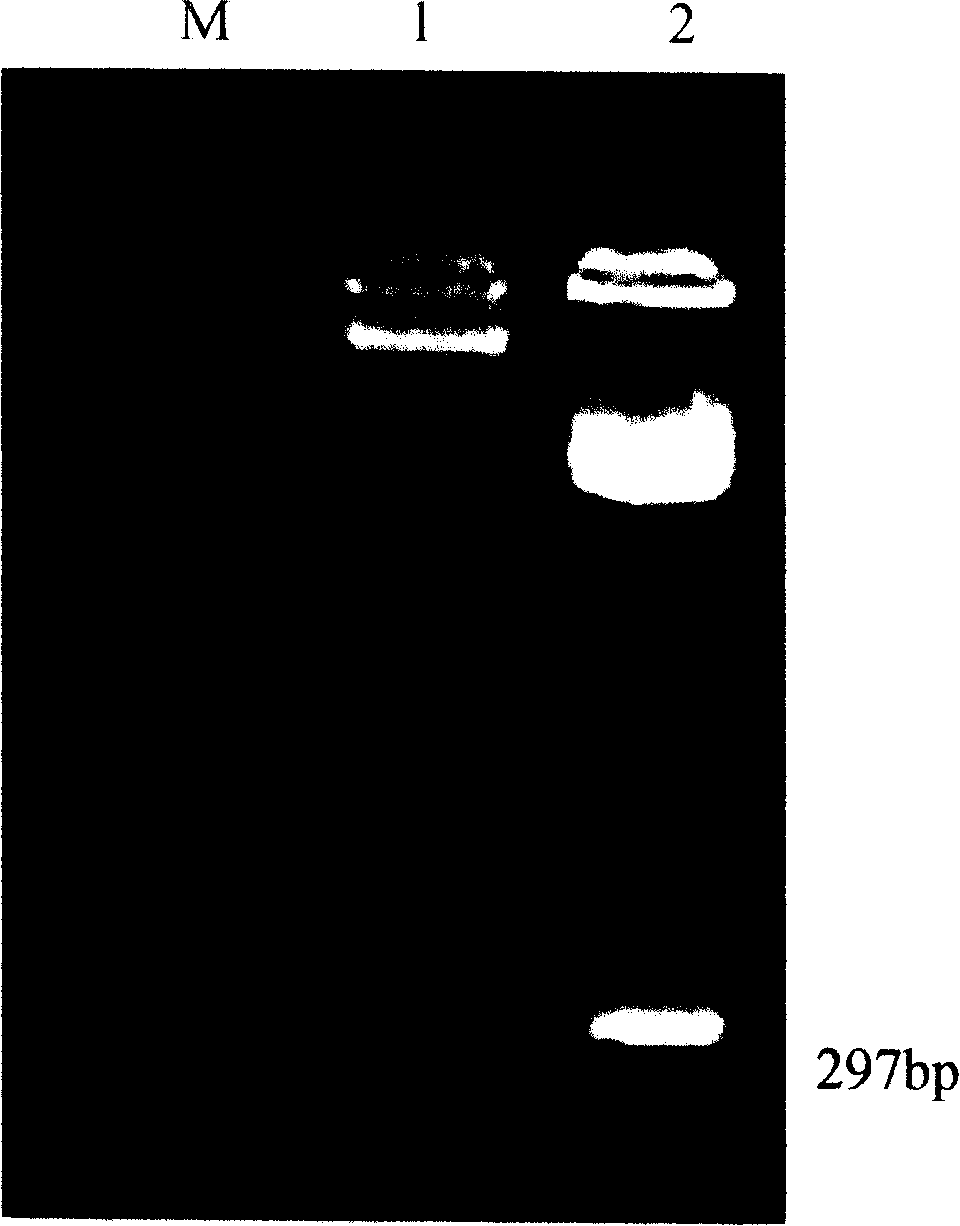Double-function amalgamation protein, preparation method and application thereof
A fusion protein and dual-function technology, applied in the field of structural fusion protein and bioengineering, to achieve the effect of inhibiting tumor angiogenesis and enhancing the level of anti-tumor cell immune response
- Summary
- Abstract
- Description
- Claims
- Application Information
AI Technical Summary
Problems solved by technology
Method used
Image
Examples
Embodiment 1
[0051] Example 1: Design, construction, identification and expression of ITIP bifunctional molecule
[0052] Such as figure 1 As shown, using InsightII molecular simulation software and database prediction methods, combined with existing ITAC and IP-10 functional research reports, the N-terminal and N-LOOP regions of ITAC and the C-terminal of IP-10 were screened out, and then The upstream of the N-terminal and N-LOOP region of ITAC introduces EcoRI restriction site, and downstream of it introduces Hind III restriction site; the upstream of IP-10 C-terminal introduces HindIII restriction site, and downstream of it introduces Xho I restriction site. RT-PCR cloned the N-terminal and N-LOOP regions of mouse ITAC and the C-terminal coding genes of IP-10. Digest the N-terminal and N-LOOP region gene fragments of ITAC and the C-terminal gene fragment of IP-10 with Hind III respectively. Take 1μl of the digested products and mix them as templates. Use the N-terminal and N-LOOP region up...
Embodiment 2
[0073] Example 2 The effect of ITIP gene transfection on the growth motility of 4T1 cells
[0074] Female BALB / c mice were inoculated subcutaneously (5×10 4 Cells / only), including untransfected 4T1 cell group, 4T1-pcDNA3 cell group, 4T1-IP-10 cell group, 4T1-ITAC cell group and 4T1-ITIP cell group (n=6). Observe the tumor formation of BALB / c mice. When the tumor grows to palpable time, measure the maximum length and width of the tumor every other day, and use the average of the two as an indicator of tumor growth. Observe for 30 days. Results The tumor formation rate was 4T1 (10 / 10), 4T1-pcDNA3 (6 / 6), 4T1-IP-10 (7 / 10), 4T1-ITAC (6 / 10) and 4T1-ITIP (3 / 10) As shown in Figures 7A and 7B, the 4T1-ITIP tumor grew slowly and its weight was significantly reduced compared with the control (p5 Cells / only), including untransfected 4T1 cell group, 4T1-pcDNA3 cell group, 4T1-IP-10 cell group, 4T1-ITAC cell group and 4T1-ITIP cell group (n=3). Observe the tumor formation in mice. As shown in F...
Embodiment 3
[0075] Example 3 Analysis of the degree and type of lymphocyte infiltration in 4T1-ITIP tumor
[0076] Since the constructed bifunctional molecule contains the N-terminal and N-LOOP regions where ITAC and the receptor have a significant effect, and the 4T1-ITIP cell supernatant we constructed has a positive effect on CXCR3 + The cells have significant chemotactic activity. Further, we studied the infiltration of local lymphocytes in 4T1-ITIP tumors. The tumor tissue 14 days after tumor formation was taken out, and after type IV collagenase digestion, the tumor infiltrating lymphocytes were separated by Ficoll density-gradient centrifugation, and counted, and the number of lymphocytes infiltrating per unit weight of tumor tissue was compared. The tumor-infiltrating lymphocytes were treated with goat anti-mouse CXCR3 antibody at 4°C for 30 minutes, washed once with PBS, and then treated with FITC-labeled donkey anti-goat IgG at 4°C for 30 minutes, washed twice with PBS and detected ...
PUM
 Login to View More
Login to View More Abstract
Description
Claims
Application Information
 Login to View More
Login to View More - R&D
- Intellectual Property
- Life Sciences
- Materials
- Tech Scout
- Unparalleled Data Quality
- Higher Quality Content
- 60% Fewer Hallucinations
Browse by: Latest US Patents, China's latest patents, Technical Efficacy Thesaurus, Application Domain, Technology Topic, Popular Technical Reports.
© 2025 PatSnap. All rights reserved.Legal|Privacy policy|Modern Slavery Act Transparency Statement|Sitemap|About US| Contact US: help@patsnap.com



